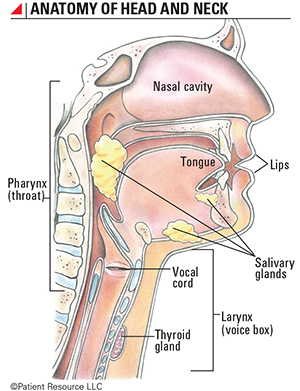Cancer Immunotherapy
Laryngeal Cancer
Often called the voice box, the larynx is a small, hollow organ in your throat that houses your vocal cords. The cartilage walls of the larynx form your Adam’s apple directly in front of the vocal cords, protecting them. Though only about 2 inches long, the larynx has three parts: the glottis (or vocal cords) is in the middle with the supraglottis above and the subglottis below.
Cancer of the larynx, also called laryngeal cancer, typically develops in the lining in thin, flat cells called squamous (SKWAY-mus) cells. Symptoms may include hoarseness or other voice changes, a persistent sore throat, a constant cough, ear pain, a lump in the throat, painful swallowing, trouble breathing or coughing up blood.
Clinical guidelines for laryngeal cancer treatment recommend a comprehensive pre-treatment evaluation for all patients. This should include a baseline assessment of voice, breathing and swallowing function, as well as counseling to thoroughly discuss each treatment option and its benefits, risks and potential effects on your quality of life.




